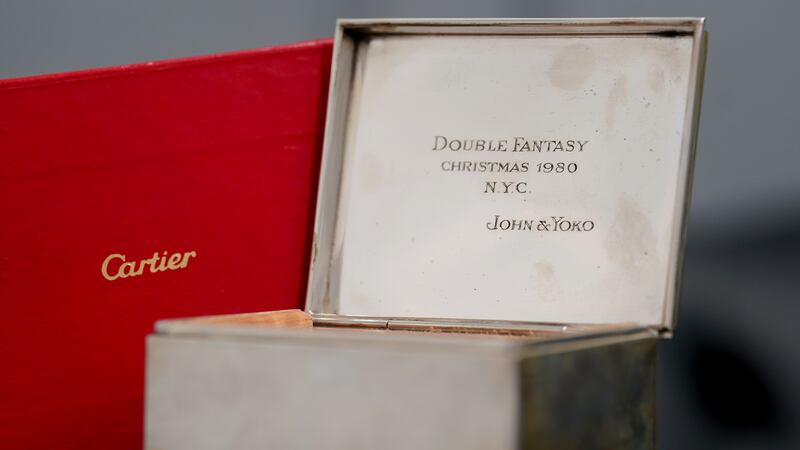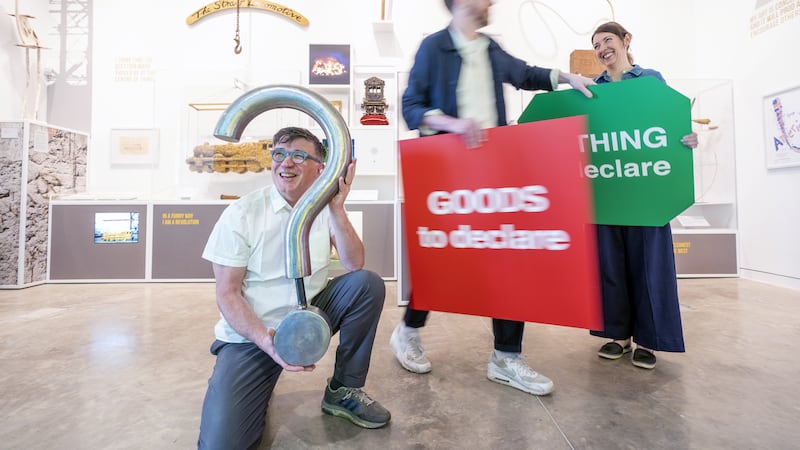IN 1850 James Finnegan was taken from Co Louth as a child to the United States where his parents were hoping to build a better life. 170 years later, his great-grandson would become the 46th president of the United States, Joseph Robinette Biden.
Millions of Irish people made the same perilous journey across the Atlantic, be it in coffin ships or via Aer Lingus, the dreams of many ending up in abject poverty while others became the building blocks of the America which would rule the 20th century.
In typical Irish tradition, the story of them all is told as much in song and story as it is in print and no person has contributed more to understanding the history of Irish America than Kerry-born, Philadelphia-adopted, Bangkok-resident Mick Moloney.
It seemed an apt time to talk to Mick with the new residents about to enter the White House. The Irish have indeed come a long way from the coal mine and the canal to the pinnacle of political power.
While Biden follows in a long line of US presidents of Irish extraction, he is only the second Catholic after John Fitzgerald Kennedy to assume the role of US commander in chief.
People who became known as the Scotch-Irish – the quarter of a million of mainly Presbyterian stock who left Ireland for what was to become the USA between 1717 and 1770 – were the first Irish immigrants to make the New World their home and they have unsurprisingly left an indelible musical heritage, which is evolving to this very day.
“Those early Scotch Irish left a major imprint on American culture of two kinds,” explained Moloney. “One was in instrumental music, with the fiddle being the dominant instrument there, a culture shared by Scotland and the north of Ireland.
“It featured a short bowing style which you still find today in Donegal,” Mick explains.
“For example, the style of fiddlers like Mairéad Ní Mhaonaigh wouldn’t be that different from Tommy Jarrell who grew up in the Round Peak area of North Carolina where making liquor and making music were long-held family traditions.
“That Scotch Irish style also played a major part in the evolution of bluegrass and old-time music and other forms.
“Then you had the song tradition which was a version of unaccompanied singing that had the same volume the whole way through with micro-ornamentations. All you have to do is to look at the Sam Henry collection to get a window on to that.”
Add this to German choral music, the coming of the banjo form Africa and you have the beginnings of American music.
The 19th century saw the mass immigration of Catholic Irish after the Famine and in the 1860s, there came a chance for all those of Irish lineage to prove they were loyal to their new homeland, the American Civil War.
Again, the Irish recorded the war in song and music.
“The Irish contributed many songs about the Civil War,” says Moloney. “The reason for that, especially for those on the Union side, was that they were proving their American-ness and war lends itself to song. There are songs and pieces of music all over the world extolling military heroes and great battles.
“Working at home, doing housework doesn’t lend itself to a song so Irish women who worked in the sweatshops or who were maids didn’t have too many songs written about them.
“However, after the Civil War, there were loads of songs written about the valorous deeds of the fighting Irish, as I say, to prove their loyalty to America. There are a few songs on the Confederate side, but not nearly as many.”
However, It was an uphill struggle for the Irish to be accepted into American society. Mick sings a song called No Irish Need Apply about the signs which were common for a long time. However, Irish manual labour was required in the coal mines, building America’s canals and on the railroads, something which pitched them against some of the most ruthless employers the world had seen.
This struggle was captured mostly by a guy called Con Carbon aka The Minstrel of the Mine Patch – who wrote many songs about miners’ rights and the injustices done to miners before he died in 1907 but thankfully songs are still being written to commemorate those hard-working people.
“There is actually a song newly written by Seamus Egan and Mick McAuley from the band Solas, which I am about to record, which tells of the Irish who worked in the copper mines of Butte, Montana.
“Seamus’s own great-great uncle, Michael Conway, a miner in Butte, is said to have been beaten to death by two policemen.”
Mick also readily points out that not everything about the Irish was squeaky clean. Racism was rife amongst them.
Slavs were brought in to cut the wages of the Irish and, on the other hand, if a black crew turned up, the Irish would down tools.
“The Irish were determined that they would move out of the hood,” says Moloney. "Some of the songs are not very politically correct but they remain part of who we are. I think most people are aware of that.”
While the native-born Irish sometimes look down at their cousins across the pond, accusing them of over-sentimentality and ignorance, Moloney’s work is a more nuanced look at the Irish experience warts and all.
“It’s the story of America – the newly arrived immigrant fighting for whatever menial or back-breaking jobs there were and to make themselves Americans and accepted by all, the Irish decided they had to remove themselves from 'the blacks'. The forces of capitalism dictated that we had to do that to be successful.”
One of Moloney’s books, Far from the Shamrock Shore: the Story of Irish Immigration Through Song is a fabulous read and listen, accompanied as it is by a 16-song CD, full of story and history.
It recreates real, three-dimensional people from all strata of society we can recognise today and places them in their proper context in songs that are often sad and just as often humorous, as in the song that decries anti-Irish sentiment and anti-Semitism at the same time in the song If it Wasn’t for the Irish and the Jews.
Mick is also in the process of writing another book with with African American choreographer, dancer and academic Lenwood Sloan which will look at the interaction between the Irish and people of colour.
With the Black Lives Matter movement going from strength and with an Irishman in the Oval Office, it might be time to revisit the songs that Mick Moloney sings to get a better insight into the tortuous route the Irish took to finally become Americans.








